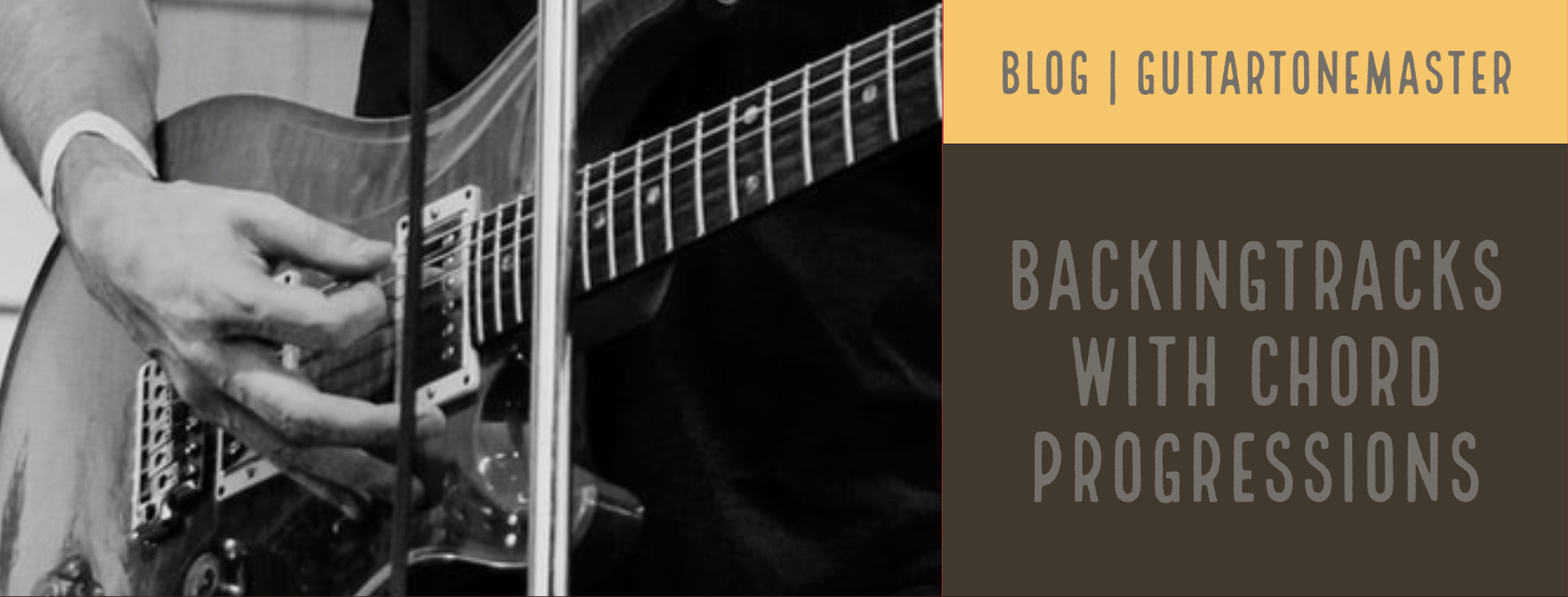Backingtracks with chord progressions
What are chord progressions?
Chord progressions are a series of chords used in a piece of music. The chords in a progression are shown by Roman numerals and are determined by key. The chord progressions determine how a piece of music unfolds over time.
Contents
Find Backing Tracks with chord progressions for guitar
Find the right jam and backing track with chord progressions with our advanced search. Use one of the search filters and choose the desired key, genre, ... and much more.
The chord progression for guitar are neatly written down or are displayed in the videos, so go ahead and select Backing Tracks with chords or with chords - play along.
- With chords: the chords are displayed in simple text format.
- With chords play along: the chords are displayed in the video as you play along.
Dive right in and start to jam!
Backing Tracks with easy chord progressions
The following backing tracks can be used as an introduction for soloing over chord changes.
They are simple chord progressions over which you can use one single scale.
12-bar Progressions | Examples
- Slow 12 Bar Shuffle Blues Guitar Backing Track Jam in E by Nick Neblo - E Major Pentatonic Scale
- Funky Slap Blues Rock Backing Jam Track in E 115 bpm by Only Backing Tracks - E Blues Scale
Two Chord Backing Tracks | Examples
- Two Chord Backing Track in Am by Artmant Studios - A Minor Pentatonic Scale
- A Dorian Mode Funky Groove Backing Track by QuistJam - A Minor Pentatonic Scale
- C Major Jam Track - Cmaj7 to Fmaj7 by Rowan J Parker - C Major Scale
Understanding Guitar Chord Progressions
Chord progressions are normally written and referred to with the use of Roman numerals. Let's start with the major scales and keys.
For example, the C major scale is this:
C - D - E - F - G - A - B
When we use roman numerals it looks like this:
I - ii - iii - IV - V - vi - vii(dim)
- The capitalized numerals are major chords
- The lowercase ones mean minor chords
- The 7th chord is a diminished chord.
With that in mind, we can take any major scale and create chord progressions.
Let’s take a look at the 3 common chord progressions: This common chord progressions are used by many artists in countless songs
I-IV-V Chord Progressions
The I - IV - V chord progression is one of the most common chord progressions in music. The I is the root note, followed by the 4th and 5th note of the scale. An example of the C scale:
-
I chord is the C major chord.
-
IV chord is F major chord
-
V chord is the G major chord
So if you play an I - IV - V chord progression in the key of C, the chords are C - F - G
Here are some popular songs the I-IV-V progression: Bob Marley - Stir it Up, CCR - Bad Moon Risin', GnR - Used to Love Her
I–V–vi–IV Chord Progressions
Another common chord progression. We already know I, IV, and V chord from the previous progression, all we must do is determine the vi chord of a scale. In a major key, the vi chord a minor chord.
With the C major scale we would give the following result:
C - G - Am - F
Here are some popular songs the I-V-vi-IV progression: Lady Gaga - Paparazzi, Aerosmith - Cryin', Bob Marley - No Woman, No Cry
Backing Tracks with I–V–vi–IV Chord Progressions: I - V - vi - IV in A | Popular Chords Backing Track; Rock in A minor (I - V - vi - IV) Backing Track No.17
What chords sound good together? The four magical chords
YouTube channel: Paul Davids
more to watch: The Australian comedy group Acis of Awesome makes a medley with 38 songs using this chord progressions.
12 bar Chord Progression
The 12 bar progression is generally associated with the blues but is also commonly used in country music. In fact, many songs outside of the genre have used the progression successfully. Let’s take the key of C for example:
I - IV - I - V - IV - I - I
C - F - C - G - F - C - C
The basic 12 bar blues consists of the following:
- 4 measures of the I chord
- 2 measures of the IV chord
- 2 measures of the I chord
- 1 measure of the V chord
- 1 measure of the IV chord
- 1 measure of the I chord
- 1 measure of the I chord
| I | I | I | I |
| IV | IV | I | I |
| V | IV | I | I |
Here are some popular songs 12 bar progression: B.B. King - The Thrill is Gone, Elvis Presley - Hound Dog, Tracy Chapman - Give Me One Reason
How To Soloing Over Chord Changes on Guitar
If you've already learned how to play guitar chords. You probably are ready to learn how to play a solo over a chord progression. What notes should you pick when playing your solo over chords?
You can determine these notes based on:
- the key of the song,
- off the chords themselves,
- or by using a relative minor scale.
Don't forget to read our article about "How do you play over backing tracks".
Additional Guitar Resources
Here's an interesting video about soloing over chord changes by FretJam. Soloing over chord changes can seem a daunting task, especially if the changes are frequent and unconventional.
YouTube channel: FretJam.com
THINK WE MISSED SOMETHING? Get in touch with us or comment below, we are always interested in finding new resources for our community.

